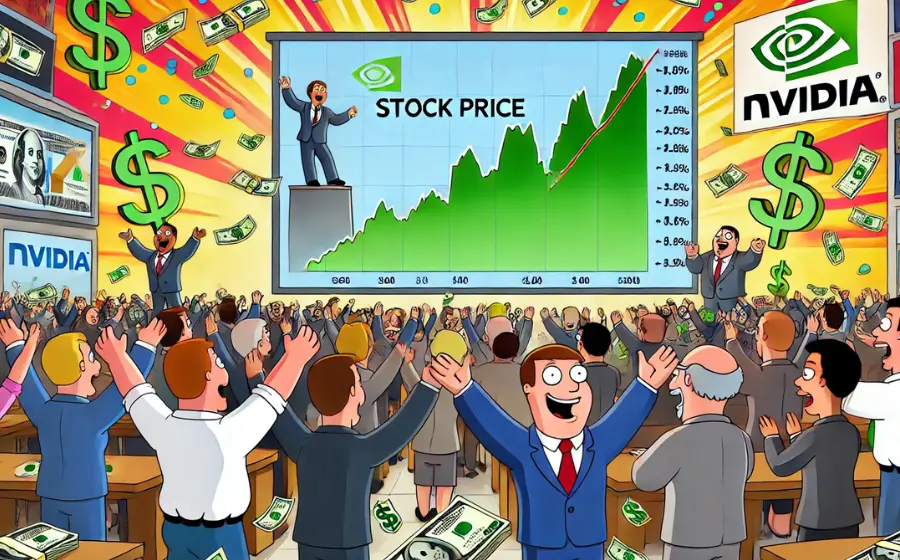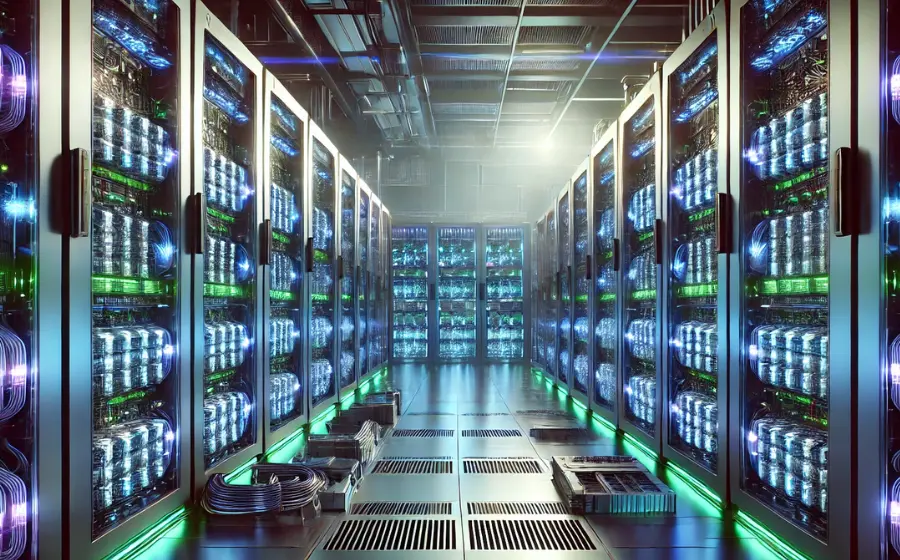
KEYTAKEAWAYS
- Deep Tech Overview: Deep technology (Deep Tech) solves major scientific problems, driving advancements in defense, space, manufacturing, energy, and agriculture.
- Rise of Deep Technologies: Factors like matured digital infrastructure, reduced computing costs, and improved intellectual property protection fuel the growth of deep technologies.
- Global Impact and Geo-Economic Considerations: Deep technologies reshape industries globally, with challenges like IIoT security and AI talent shortages. Geopolitical tensions highlight the strategic importance of deep tech in national agendas.

- KEY TAKEAWAYS
- WHAT IS DEEP TECH?
- NANOMATERIALS HAVE BEEN AROUND FOR A WHILE BUT NOT YET FLOURISHED
- ADDITIVE MANUFACTURING(3D PRINTING) TAKES PRODUCT DESIGN AND MANUFACTURING TO A NEW DIMENSION
- SUPPLY CHAIN CONTROL TOWER DEMANDS DRIVE ARTIFICIAL INTELLIGENCE GROWTH MOMENTUM
- INDUSTRIAL INTERNET OF THINGS(IIOT): A CRITICAL TECHNOLOGY THAT HAS TWO SIDES
- DEEP TECHNOLOGY TESTS THE RESEARCH CAPABILITY AND PATIENCE OF ENTERPRISES AND THE NEED TO PAY ATTENTION TO GEOECONOMICS CHANGES
- DISCLAIMER
- WRITER’S INTRO
CONTENT
WHAT IS DEEP TECH?
Deep Technology (Deep Tech) refers to revolutionary technologies capable of solving major engineering or scientific problems rather than providing consumer applications. Standard deep technologies include artificial intelligence, brain-computer interfaces, quantum science, photonics, nanotechnology, and advanced materials(new materials with enhanced properties intentionally designed for superior performance). They are often developed by startups or in-house/university laboratories, commonly called “black tech.” These technologies are used in defense, space, high-end manufacturing, green energy, and advanced agriculture. Since deep technology is a form of fundamental research, many countries such as the United States, Europe, and China are investing heavily in deep technology development to gain a foothold in the future era of technological competition.
The most significant difference between general and deep tech is not the technology itself but the use of the technology. General technologies are mainly used for commercial purposes, and the threshold for many general technologies is lower than that for deep technologies. Deep Tech entrepreneurs tend to be in their 20s and 25s, often called the prime age for entrepreneurship. On the other hand, deep technologies require in-depth academic knowledge, and most entrepreneurs are doctoral-level researchers, so they will join the industry after the age of 35. General technologies emphasize rapid implementation, and market, capital, technology, and scaling are indispensable, while deep technologies mainly require money and techniques.
There are four main reasons for the rise of deep technologies: First, the digital infrastructure is maturing, allowing researchers to integrate various technologies and try to fuse them to solve significant problems (green energy, AI diffusion, or space exploration). Second, the maturity of cloud-based tools has dramatically reduced computing costs, which is critical for in-depth technologies that require large amounts of data to be analyzed. Furthermore, the lower hardware and material acquisition cost has increased the ability to scale up experiments, reducing the time required to transition from basic research to applied research. Finally, the gradual improvement of intellectual property and patent protection mechanisms and the recognition of intangible asset value by enterprises and governments have increased the feasibility of in-depth research. Other reasons, such as the outbreak of epidemics, have led to the transformation of industries. Many companies are trying to develop new technologies for digitalization, and ESG has become a trend, so the demand for renewable energy and biomimetic materials has increased dramatically.
NANOMATERIALS HAVE BEEN AROUND FOR A WHILE BUT NOT YET FLOURISHED
According to Precedence Research, The global advanced materials market size was estimated at USD 61.35 billion in 2022, and it is expected to hit around USD 112.7 billion by 2032, poised to grow at a CAGR of 6.27% from 2023 to 2032. Advanced materials are mainly used in various manufacturing industries, such as aerospace, automotive, chemical, textile, electronics, energy, and national defense.
The most commonly discussed advanced materials are nanomaterials. By definition, the three-dimensional size of nanomaterials usually ranges from 1 nm to 100 nm, and the total number of elementary particles accounts for 50% of the total number of particles in the material. Common nanomaterials include nanocrystalline materials, nanoparticles, nanoporous materials, and nanofibers. Its advantage is that it can produce more physical and chemical changes on the nanometer scale, which makes the diversity of materials more abundant; plus, it does not require significant capital investment and is one of the key focuses for developing many manufacturing industries and countries. Enterprises such as CNM Technologies, Graphene Energy Storage Devices, Applied Nanotech, Omega Optics, and NanoCare Deutschland have all invested in nanomaterials research and are gradually turning to commercialization. Governments such as the United States, Europe, Japan, Korea, and Singapore are also investing a lot of resources and collaborating with industry and academia to seize the first opportunity in the future.
Global Nanomaterials Key Research and Development Companies
As a part of deep technology, nanomaterials have a wide range of applications. In addition to being used in the product structure of aerospace and automotive industries, they can also be used to manufacture artificial joints. In addition, nano-capsules are an essential component of composite materials, and their corrosion-resistant and highly absorbent properties make them suitable for use in the manufacture of home appliances and the production of semiconductors and electronic circuits. However, due to the complexity of the manufacturing process and research and development, although currently widely used, the relevant materials still need to be in the stage of high research and development and high investment. Under the trend of net zero carbon emission and the continuous development of the space industry, the demand for nanomaterials should increase and become an important technology that significantly affects the product structure of the manufacturing industry.
In addition to the original large-scale enterprises, it is also worth observing the application of nanomaterials/technology by startups, such as MoleaerTM from the United States, whose main product is a nanomaterials system that can be applied to heavy industries such as water resource facilities and oil refining; and Graphmatech from Sweden, which develops a metal powder with a homogeneous distribution of graphene which will enhance the efficiency of future additive manufacturing.
ADDITIVE MANUFACTURING(3D PRINTING) TAKES PRODUCT DESIGN AND MANUFACTURING TO A NEW DIMENSION
Additive Manufacturing(AM) is now essential in boosting intelligent manufacturing. Discretizing the 3D design data in 2D and then stacking the discrete data into 3D components through additive manufacturing, polymers, ceramics, metals, and composite materials are pressed into fine wires, rods, powders, and sheets. Additive manufacturing often produces complex components, especially in precision machines, automotive, aerospace, and other industries.
Meanwhile, as the supply chain faces challenges such as labor and material shortages festering globally, additive manufacturing is expected to grow even more rapidly under enterprises’ hyper-automation trend. In addition, the high cleanliness and mechanical stability of additive manufacturing breaks through the challenge of CNC’s inability to shape products geometrically, which significantly helps manufacturers to meet the demand for small quantities, multiple sizes, and customized production and not only reduces the time and cost of product development but also improves the yield rate of mass production.
Global Additive Manufacturing Major Manufacturers
Nevertheless, additive manufacturing still faces considerable challenges, making it difficult to scale up:
1. The types of materials suitable for additive manufacturing are limited, and the uniformity of materials has yet to be fully mastered.
2. There are yet to be suitable testing methods for defective products; monitoring technology needs to be strengthened. Since additive manufacturing is an additive production, whether the process parameters at each production location are uniform and stable will affect the microstructure quality of the components, such as the establishment of production monitoring and matching of suitable parameters at individual production locations, which is yet to be a breakthrough for the industry.
3. The traditional on-machine molding process is not yet completed, and the production of aircraft fuselage structures, engine blades, marine propellers, and molds still requires the use of subtraction(splitting) and then addition, making it impossible to achieve the desired results in one step.
However, there are also opportunities to cope with those difficulties, especially for the machine tool industry. As the mother of all machinery, the machine tool industry considerably impacts the downstream electronics manufacturing, automotive, and aerospace industries. Recently, the European Union released a blueprint on how machine tools can use integrated manufacturing to enhance the industry’s value chain capabilities and help downstream industries reach scale.

SUPPLY CHAIN CONTROL TOWER DEMANDS DRIVE ARTIFICIAL INTELLIGENCE GROWTH MOMENTUM
In addition to nanomaterials, the application of artificial intelligence in manufacturing is also a part of Deep Tech. The current supply chain faces many challenges, with limited visibility across the supply chain. For many enterprises, supply chain visibility is almost impossible due to the difficulty in accessing data. Others are utilizing little data sets to gain some level of insight. The multi-layered and complex supply and manufacturing structure further exacerbates the supply chain visibility challenge.
In addition, demand forecasting has become a complicated business issue in this environment. Traditionally, the time-series models that companies use to predict the future have relied on historical sales data and operational data, and inaccurate forecasts can easily lead to supply-demand imbalances such as inventory backlogs and depletion of inventory. Since enterprises often lack sufficient information about the supply chain, it is impossible to address potential risks proactively.
It has become apparent how enterprises can utilize artificial intelligence and real-time data (e.g., climate, news community, and partner data) to gain insights into exponentially evolving technologies, enhance existing planning methods, and shift from a traditional reactive to a proactive mode.
From the demand side, Supply Chain Control Towers have become a new requirement for the global manufacturing industry after the outbreak. Supply Chain Control Tower can integrate the operation side and the manufacturing side and utilize technologies such as artificial intelligence, low-programming codes, IoT, and cloud to integrate people, processes, and the technical infrastructure with critical data, business indicators, and events in the end-to-end supply chain so that enterprises can understand the status of their supply chain data assets in real-time, and further react to events or formulate decisions in advance.
According to Grandview Research, the global control tower market size was estimated at USD 7.31 billion in 2022 and is expected to grow at a compound annual growth rate (CAGR) of 21.3% from 2023 to 2030. Even after the epidemic, operators are still actively exploring how control towers can provide end-to-end visibility into global supply chain operations. Regarding functionality, supply chain control towers can be subdivided into logistics control towers, operations control towers, transportation control towers, analytics control towers, and inventory control towers. These different control towers can be rapidly deployed and presented as a single source through modularization and cloud-based support.
If we analyze from the supply side, SAP, IBM, Microsoft, AWS, HCL Dynamics, and other companies have provided different solutions. Take Microsoft as an example; its supply chain platform can integrate Azure(Data Lake, Data Factory), Dynamics 365, Microsoft Teams, and Power Platform, which covers the complete cycle of commodity planning, supply chain operation to product sales and marketing, and includes market trend analysis, customer feedback, and other external information.
At the same time, data analysis tools and artificial intelligence are used to optimize supply chain management models and calculate optimal inventory. Users can also develop customized supply chain management platforms, create customized workflows using low-code solutions in Power Platform, and collaborate internally and externally through Teams to shorten purchasing cycles, reduce inventory costs, and increase transaction rates.
On the production side, digital platforms continue to generate insights and optimize the operational efficiency of the supply chain to enhance the time-to-market of goods and services and become a software-connected and software-defined (products often used to catch your attention rather than describe their functions) supply chain maintenance, all of which requires the participation of artificial intelligence.
Meanwhile, to enable artificial intelligence to utilize its benefits in supply chain management further, IBM proposes the “Continuous Intelligence Planning” strategy to assist manufacturers in effectively deploying related technologies. According to IBM’s definition, “continuous collaborative planning with artificial intelligence improves integrated business planning and ensures that enterprises maintain business resilience in a changing marketplace.”
In practice, using dynamic real-time data instead of scattered data further improves planning accuracy and responsiveness, and demand-aware models capture the latest information to make responsive demand forecasts. Machine learning algorithms utilize real-time data to generate updated near-term forecasts and related operational plans and continuously learn and improve based on results and user actions. This strategy can be viewed as a human-machine collaboration to balance lean production with forecasting capabilities.
For manufacturers, the application of deep technology has the most tremendous potential at the production end. Although artificial intelligence has been widely used in intelligent manufacturing, its power has yet to be fully realized for several reasons:
1. Even though the technology and infrastructure of AI are approaching maturity, enterprises have yet to realize the power of self-thinking and self-operating AI through this technology. Manufacturers have already digitized and accumulated a large amount of data, but many enterprises still need an adequate data infrastructure to acquire sufficient commercially valuable data. Although this issue has been discussed for a long time, the actual progress has yet to be as expected.
2. There is still a severe imbalance between the supply and demand of artificial intelligence talent. Many data scientists, software engineers, and algorithm engineers with domain knowledge have joined the software-driven technology industry and are moving toward Web 3.0 development. Although some industry players have recruited relevant talent, they often fail to collaborate on projects due to miscommunication or lack of organizational support.
3. The current application field is mainly in the manufacturing end, such as image recognition, predictive maintenance, and defect detection is in full swing, and supervised learning algorithms also shine in it; however, on the other hand, the supply chain technology, which is the most crucial issue for the industry, there is still a lot of room for development. The digital supply chain relies on the connection between artificial intelligence and the Internet of Things(IoT) to enable the industry to reduce the communication costs of incoming, stocking, and outgoing goods through information exchange. It may seem easy, but with the lack of technological popularization and trust, there is still a long way to go for the digital supply chain driven by artificial intelligence.
INDUSTRIAL INTERNET OF THINGS(IIOT): A CRITICAL TECHNOLOGY THAT HAS TWO SIDES
Since introducing Industry 4.0, the application of the Internet of Things(IoT) in the manufacturing industry has spread like wildfire. In the Industrial Internet of Things(IIoT), machines can interact and communicate with other machines, objects, environments, and infrastructures, connecting, monitoring, analyzing, and using data in new ways. Through the collection of large amounts of data and machine-to-machine(M2M) communication, OT and IT, including human-machine interfaces(HMIs), supervisory control and data acquisition(SCADA) systems, decentralized control systems(DCSs), and programmable logic controllers(PLCs), can be integrated to form an essential underpinning for the transformation of the manufacturing industry.
With AI’s support, the current IIoT’s functions have been further enhanced, such as applying AI to edge computing and customizing IIoT solutions. At the same time, the technology’s end-to-cloud platform enables enterprises to transform from product design manufacturing to maintenance and from equipment optimization to plant energy management, all of which are the main reasons for the increased acceptance of the IIoT. According to ResearchandMarkets, the global Industrial Internet of Things market size is anticipated to reach USD 1,693.30 billion and expand at 23.2% CAGR from 2023 to 2030.
Of course, technology is always two sides of the same coin. The Industrial Internet of Things faces several challenges, namely the security risks associated with the increasing number of sensor nodes in series. In the Industry 3.0 era, sensors were less vulnerable to hacking because of their limited connectivity. However, in the Industry 4.0 era, due to the proliferation of sensor manufacturers, some use unpatched open-source code for product development, which hackers easily target.
In addition, hackers may also target OT ICS, SCADA, or connected devices (e.g., meters or switches), destroying infrastructure and services, or an organization’s workforce, resources, and assets. However, even with these security challenges or integration issues between different protocols of machines, the IIoT is still one of the digital devices that companies are actively deploying today, and it is playing an increasingly important role in the manufacturing industry as it evolves from a linear to a networked economy.
DEEP TECHNOLOGY TESTS THE RESEARCH CAPABILITY AND PATIENCE OF ENTERPRISES AND THE NEED TO PAY ATTENTION TO GEOECONOMICS CHANGES
Indeed, although all of the above technologies are becoming mature, the focus is on the ability to solve a wide range of industrial problems, and the market potential won’t be underestimated after being recognized as a deep technology. In the wave of hardware and software integration, solutions are no longer provided solely by the information services industry or technology industry; more and more manufacturing companies invest in cooperation with academic and research institutions or the establishment of research institutes (such as Hon Hai Research Institute, Delta Research Center) and other professional organizations.
For Taiwan, due to the recent amendment to the Statute for Industrial Innovation, some professionals have pointed out that this amendment may encourage more destructive innovation rather than steady progressive innovation. Taiwan’s current strength is to capitalize on the growth momentum of ICT to develop markets such as electric vehicles, self-driving cars, the Internet of Things, smart cities, and 5G. Although there are no representative companies in Deep Tech, the combination of large companies with R&D organizations or school teams can help develop technologies such as additive manufacturing and nanomaterials, and the support of enterprises can also lead to the phased transfer of these deep-tech technologies or continue to re-invest in them after reaching certain milestones to explore various applications in the future.
From a political and economic perspective, the electronics manufacturing industry and various emerging technologies have become the center of attention for all countries. The technology/trade game between the U.S. and China over the past few years, extended to the current Russo-Ukrainian War, has forced the European Union to build technological barriers or take measures to protect critical technologies. As for Asia, Singapore, Korea, China, and Japan have also made their plans for Deep Tech. Deep technology requires in-depth academic knowledge, many doctoral-level researchers, and funding. Due to the long cycle of the technology, commercialization is slower than general technologies. At the same time, because deep technology involves areas such as biomedicine, defense, space, and advanced manufacturing, it consists of national strategic resource allocation and the technological tug-of-war between countries. Therefore, many countries have strict regulations on transferring deep technology to prevent other countries from obtaining sensitive technology through poaching or acquisition.
Overall, under the wave of software and hardware integration, solutions are no longer provided solely by the information service industry or technology companies. More and more major manufacturing companies are investing in cooperation with academic and research institutions to more deeply explore the impact of these technologies on manufacturing now and in the future.
Looking for the latest scoop and cool insights from CoinRank? Hit up our Twitter and stay in the loop with all our fresh stories!


















